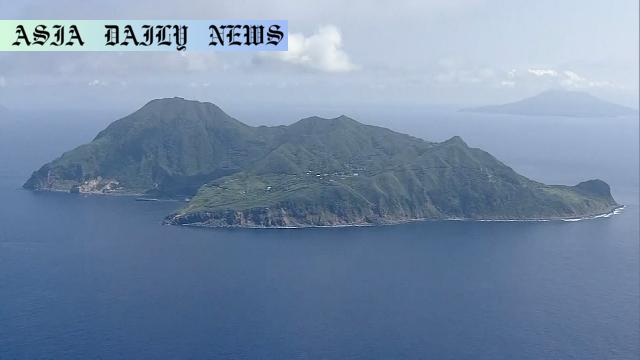Earthquakes: Seismic activity surged since June 21 around Akusekijima and Kodakarajima Islands, with over 2,000 recorded tremors.
- Seismic activity has intensified near the Tokara Islands since June 21.
- Over 2,000 earthquakes with intensities of 1 or higher have been recorded.
- A quake measuring lower 6 struck Akusekijima Island on July 3, followed by multiple others of lower intensities in the following days.
- This year’s seismic activity far exceeds similar events in 2021 and 2023.

Introduction: Unprecedented Tremors in the Tokara Islands
The Tokara Islands in Kagoshima Prefecture, Japan, have become the epicenter of significant seismic concerns as over 2,000 earthquakes have been recorded since June 21, 2023. The region, comprising small islands like Akusekijima and Kodakarajima, is no stranger to seismic activity; however, the recent surge surpasses historic trends, raising alarms among residents and experts alike. The Japan Meteorological Agency (JMA) is urging residents to stay cautious as further tremors could hit or even exceed a lower 6 on the Japanese seismic intensity scale (ranging from 0 to 7).
Key Seismic Events Since June 21
The increased frequency of earthquakes in the Tokara Islands began in late June, marking a significant shift in seismic behavior. On July 3, a quake measuring lower 6 struck Akusekijima Island, shaking the region and causing widespread concern. This was followed by two jolts with intensities of upper 5 on July 6 and another quake registering lower 5 on July 7. As of July 12, 11 a.m., a staggering total of 2,087 tremors measuring one or higher on the seismic intensity scale have been observed in the sea surrounding this remote island chain. The pattern indicates a relentless escalation of seismic activity.
Comparing Present and Past Seismic Trends
Historically, the Tokara Islands region has experienced periodic seismic instability, with notable earthquake swarms occurring in 2021 and earlier in 2023. However, the sheer magnitude and frequency of the current seismic events are unparalleled, with daily occurrences exceeding 40 tremors on some days. Experts are closely monitoring this trend, suggesting that shifts in tectonic activity beneath the seabed are responsible. Unlike previous swarms, the recent quakes are not showing signs of subsiding, which has heightened concerns about potential future disasters.
The Impact on Local Communities
The persistent earthquake swarms have significantly impacted local communities, particularly on islands like Akusekijima. Residents have reported damaged structures, disruptions in daily life, and heightened stress levels due to the fear of larger quakes. With some tremors registering intensities strong enough to cause minor damage to buildings, authorities have been working tirelessly to assess and mitigate the risks. Emergency preparedness measures, such as evacuation drills and the implementation of safety protocols, have become a crucial focus for local government and disaster management teams.
Scientific Perspectives and Future Risks
Seismologists believe the intensified activity around the Tokara Islands is driven by tectonic movements associated with the Philippine Sea Plate. The complex interplay of geological forces in the area has historically made it a hotspot for earthquakes. However, the magnitude and persistence of the current tremor sequence suggest that more significant seismic events could occur. The potential for a large earthquake or even volcanic activity has not been ruled out, prompting scientists to conduct detailed studies and deploy advanced monitoring equipment in the region.
Conclusion: Preparedness and Vigilance
The situation in the Tokara Islands underscores the importance of disaster preparedness in seismic-prone regions. While the earthquakes have so far caused minimal structural damage, the possibility of larger events remains a cause for concern. Residents, local authorities, and meteorological agencies must remain vigilant and proactive, ensuring the safety and well-being of those living in the affected areas. Continued research and monitoring are essential to understanding the underlying causes and potential risks, helping to mitigate the impact of future seismic events.



Commentary
Understanding the Tokara Islands’ Crisis
The ongoing seismic activity in the Tokara Islands presents an alarming yet captivating phenomenon that underscores our planet’s dynamic nature. As someone deeply fascinated by geoscience, I find the current situation a poignant reminder of how unpredictable and powerful Earth’s tectonic forces can be. The staggering statistics—over 2,000 tremors within a few weeks—highlight the extent of instability under this picturesque island chain. For those living in the region, however, this is more than a scientific curiosity. It is a tangible threat to their safety and livelihood.
The Importance of Monitoring and Preparedness
What stands out in situations like this is the critical role of monitoring and preparedness. The Japan Meteorological Agency’s efforts to keep the population informed and provide up-to-date data are commendable. However, the rising intensity and frequency of these tremors pose complex challenges. Ensuring that local communities are adequately prepared for a potentially devastating earthquake requires coordinated action, resources, and public awareness. Rapid response mechanisms and clear communication can save lives should the situation escalate further.
Reflections on Human Resilience and Nature
Finally, the situation brings to mind the delicate relationship between humanity and nature. Despite all our technological advancements, events like these remind us that we are still at the mercy of Earth’s raw power. Yet, it is also inspiring to see communities come together, displaying resilience and adaptability in the face of such uncertainty. As this story unfolds, it is my hope that the lessons learned will contribute to better preparedness, deeper scientific understanding, and a renewed appreciation for the natural world.